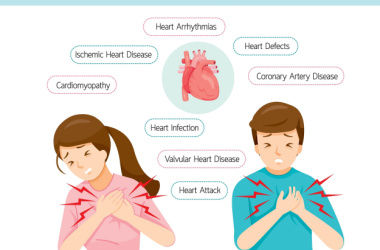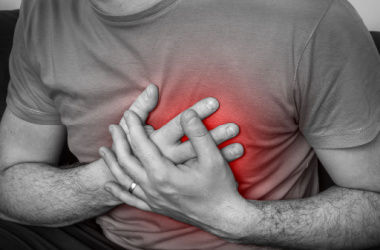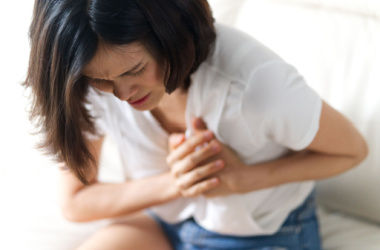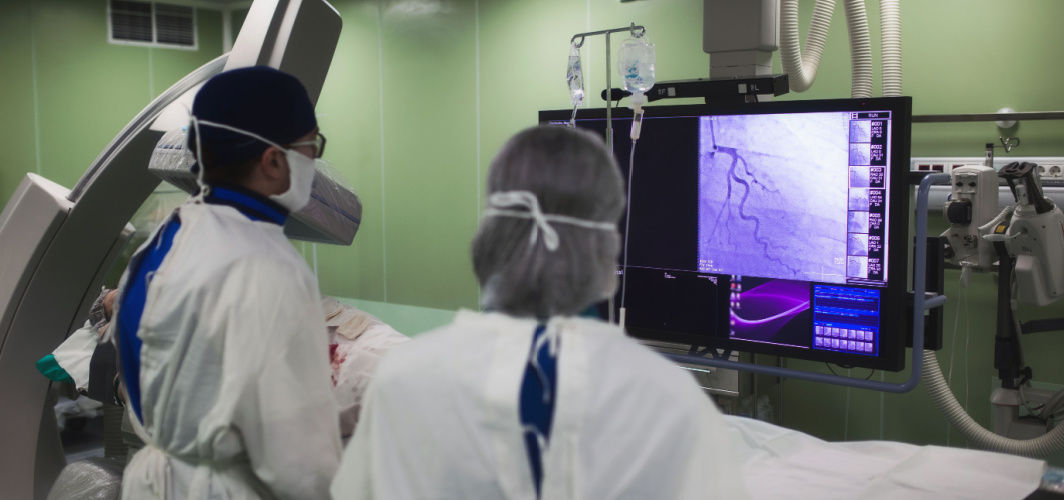Heart Conditions
Do You Know Men & Women Display Different Symptoms To These 6 Cardiovascular Diseases?
5 min read
By Apollo 24|7, Published on - 23 September 2022, Updated on - 12 October 2023
Share this article
0
3 likes

According to the World Health Organisation, nearly 32% of global deaths are associated with cardiovascular conditions in some way or another. As the name suggests, cardiovascular diseases (CVDs) are the ones that affect the heart and blood vessels. Most CVDs occur either due to plaque deposition or the formation of an abnormal blood clot. Each CVD has a distinct sign, which can differ in both men and women. However, identifying those signs at an early stage can help manage the condition effectively. Let us know about the early signs of the 6 most commonly occurring CVDs.
To know the well-being of your heart, Book Apollo's Heart Check Test
Common symptoms of 6 cardiovascular diseases

1. Heart attack symptoms
A sudden loss of blood flow to the heart is the most common cause of a heart attack. Common symptoms of a heart attack in men and women include:
- Chest pain
- Shortness of breath
- Fatigue
- Light-headedness
- Nausea
Note:
According to a study, nausea, shoulder pain and upper back pain are some of the most common symptoms of a heart attack in women. While men tend to report chest pain as their primary or only symptom.
2. Heart failure symptoms
The failure of the heart is a chronic condition where the heart gradually loses its ability to pump blood within the body. Common symptoms of heart failure in men and women include:
- Dyspnea (shortness of breath)
- Diaphoresis (sweating to an unusual degree)
- Fatigue
- Insomnia
- Cognitive dysfunction (inability to think, make decisions and memorise information)
Note:
It has also been noted that women with heart failure tend to exhibit symptoms like depression and anxiety more than men.
3. Valve disease symptoms
This disease occurs when the valves of the heart get damaged. Valve disease typically happens in three different ways, which include stenosis, prolapse, and atresia. Stenosis refers to the narrowing of the valves, while prolapse is the condition in which the valves do not close properly, Atresia, on the other hand, refers to improperly formed valves. In mild cases of valve disease, some people may not experience any symptoms initially. Meanwhile, the common symptoms of valve disease in men and women include:
- Shortness of breath
- Pulmonary hypertension (high pressure in the blood vessels leading from the heart to the lungs)
- Persistent fatigue
Note:
Women with valve disease exhibit signs of shortness of breath and physical frailty while men are more likely to report chest pain.
4. Stroke symptoms
An interruption of blood supply to the brain can result in a stroke. In such cases, one must react immediately to the symptoms so that the treatment can be performed as soon as possible. Acute symptoms of stroke can cause disabilities and alter the quality of life. the common symptoms of stroke in men and women include:
- Weakness and numbness
- Speech problems
- Confusion
- Visual changes
- Dizziness
Note:
Symptoms like headaches and changes in mental status are more frequent in women than men. On the contrary, men experience focal visual differences more than women.
5. Rhythm disorders symptoms
Also known as cardiac arrhythmia, rhythm disorders refer to irregular heartbeats. Atrial fibrillation (AF) is the most common rhythm disorder that often presents itself with palpitations. Common symptoms of rhythm disorders in men and women include:
- Fatigue
- Shortness of breath
- Dizziness
Note:
According to research, women with Atrial fibrillation tend to experience palpitations while men are typically asymptomatic.
6. Vein and artery disease symptoms
Peripheral artery disease (PAD) tends to reduce the blood supply in the legs. It generally affects the arteries present in the lower extremities of the human body. Common symptoms of PAD in men and women include:
- Leg pain
- Fatigue
- Heaviness
- Cramping
Note:
Women tend to acquire this disease much more easily as compared to men. Women are likely to be asymptomatic of PAD or display its classic symptoms.
FAQ
1. How does heart disease differ between men and women?
Men typically develop this plaque build-up in the largest arteries while women are more likely to acquire it in the heart’s smallest blood vessels.
2. Who do cardiovascular diseases affect more, men or women?
Men generally develop a CVD at a younger age and have a higher risk of coronary heart disease as compared to women. On the contrary, women are at a higher risk of stroke which typically occurs at an older age.

3. Why do men and women have different symptoms of heart attacks?
Women have smaller hearts and arteries as compared to men, therefore, the symptoms of a heart attack tend to be different between them.
4. What are the symptoms of heart disease in females?
Some of the most common symptoms of heart disease in females include neck pain, upper back pain, sweating, nausea and fatigue.
5. What are the symptoms of heart disease in males?
Some of the most common symptoms of heart disease in males include shortness of breath, extreme fatigue, or chest pain.

If you know someone that has been suffering from the conditions mentioned in this article, it is best to take them to a health provider or a doctor.
Medically reviewed by Dr Sonia Bhatt.
Heart Conditions
Leave Comment
Recommended for you

Heart Conditions
Know The Difference Between Angiography And Angioplasty
Angiography and angioplasty are two of the most commonly used procedures to detect and treat heart conditions. Learn about their uses, benefits, risks and how they can help diagnose and treat cardiovascular conditions.

Heart Conditions
What Causes Heart Block in Athletes?
It has recently been reported that continuous endurance exercises can lead to the development of heart blocks in athletes and other sports players.

Heart Conditions
6 Ways In Which A Plant-Based Diet Improves Your Heart Health
Evidence supports the claim that plant-based diets are beneficial for heart health. These diets often have lower cholesterol and saturated fat levels than those containing animal products. Plant-based foods can reduce the risk of heart disease and various other health issues.
Subscribe
Sign up for our free Health Library Daily Newsletter
Get doctor-approved health tips, news, and more.
Visual Stories

Easy Cardio Exercises to Keep Your Heart Healthy
Tap to continue exploring
Recommended for you

Heart Conditions
Know The Difference Between Angiography And Angioplasty
Angiography and angioplasty are two of the most commonly used procedures to detect and treat heart conditions. Learn about their uses, benefits, risks and how they can help diagnose and treat cardiovascular conditions.

Heart Conditions
What Causes Heart Block in Athletes?
It has recently been reported that continuous endurance exercises can lead to the development of heart blocks in athletes and other sports players.

Heart Conditions
6 Ways In Which A Plant-Based Diet Improves Your Heart Health
Evidence supports the claim that plant-based diets are beneficial for heart health. These diets often have lower cholesterol and saturated fat levels than those containing animal products. Plant-based foods can reduce the risk of heart disease and various other health issues.